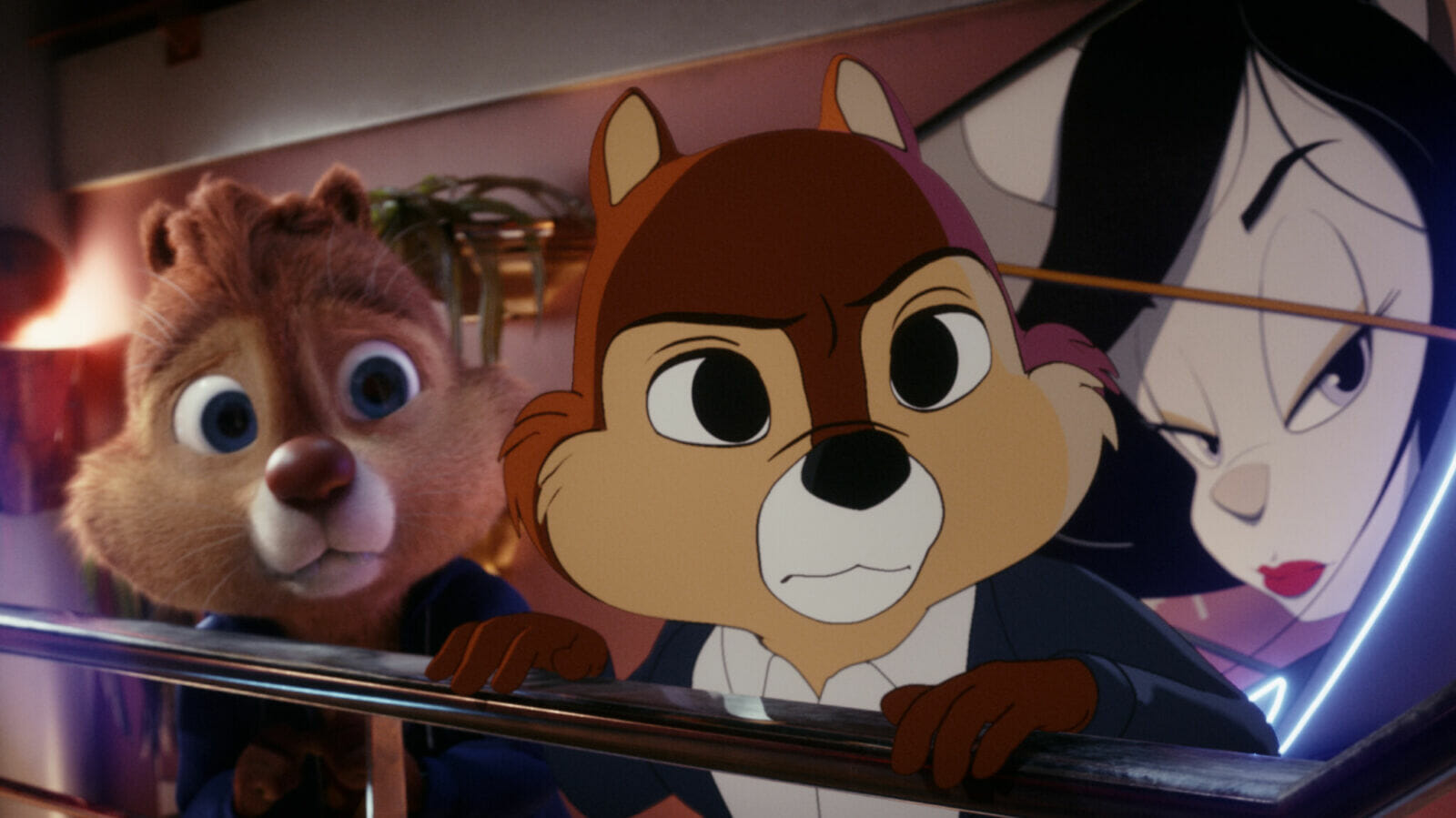When Disney was drumming up buzz for Chip ‘n Dale: Rescue Rangers, some suit described it as “meta, something self-referential and cool,” instantly outing the project as corporate and uncool. “Self-referential” has become a tryhard calling card for studios reviving old properties—a reminder that IP resurrection brings back only the body, not the soul, and thus requires a heaping of in-jokes and nostalgia to fill the void and exploit the viewer’s incredulity. These meta studio movies proclaim art’s undeath with a wink and a smirk, gratifying and flagellating themselves with the whip of postmodern irony until their recycled flesh falls off. Anyway, the chipmunk detectives are back.
READ ALSO: Review: ‘Spider-Man: No Way Home’ is worth celebrating
In this cool, meta spin on the duo, the late-80s animated series Chip ‘n Dale: Rescue Rangers was indeed just a TV series, and Chip ‘n Dale are washed-up actors in a live-action/animated hybrid world à la Who Framed Roger Rabbit. Chip looks his old self—well, as a 3D model in live action, more like a rotoscope of his old self—while Dale, having undergone “CGI surgery,” is a rodent of the live-action Alvin variety, which the movie is sure to poke fun at. You get the tone of the thing. After an old friend of theirs is kidnapped, Chip and Dale—who fell out years ago, of course—must assume their detective personas and get to the bottom of the crime.
The adventure is a cavalcade of cameos from the last few decades of animation, so it’s prime for 80s and 90s kids who’ve kept up with media culture (unless they’ve seen The Adventures of Rocky and Bullwinkle, from which Rescue Rangers borrows liberally). Multiple animation styles are woven into the footage seamlessly, but the effect is almost too seamless—like the hours put into it have been scrubbed away. The film lacks the wicked stylistic signature of its cinematographer Larry Fong, even as a comedic tool. It seems the camera’s been tamed to ease the VFX work. The blend is technically impressive in every sense of the word, but it won’t blow anyone’s mind.
Neither will the story, which plays like a Disney Mad Libs template for “getting the crew back together” with satire plugged into the blanks. If you’ve seen enough movies to get all the references, Rangers’ plot beats and sendups will offer extremely diminished returns. The satire, on the other hand, is delightfully caustic. Dan Gregor and Doug Mand’s screenplay proves a sharp skewer of the industry. They’re still trapped in the corporate ouroboros of indulging in what they’re riffing on, but their riffs are in many instances funny, incisive, and delivered with alacrity. John Mulaney’s vocal performance epitomizes its appeal: his cadence and inflection are practically part of his brand, but he can still calculate them into some great-sounding jokes.
The parade of cameos has its pleasures—nostalgia keeps our brains from deleting our memories for our own good—but it feels like a showcase of Disney properties whether it’s in on the joke or not. Several non-Disney properties make appearances as well, which would be fun if Disney didn’t grind creatives into dust for borrowing their licensed characters. Crossovers just don’t have the same energy under an entertainment monopoly. The movie’s self-aware distance from its source material is amusing, but it’s not as memorable as a deep, sincere dive into the soul of a cultural phenomenon, as Lord and Miller accomplished with The Lego Movie. If Hollywood’s solution to the cannibalization and homogenization of art is talent and ironic distance, we’ll just have some fun as popular cinema dies.
★★★ (3/5)




